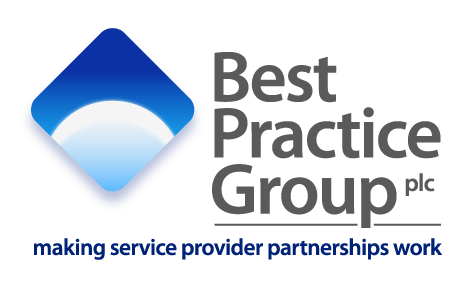Contract management and supplier relationship management are two distinct disciplines that play a crucial role in the success of key supplier relationships and the achievement of expected outcomes from critical outsourced contracts. Although these activities have often been overlooked and underfunded in the past, they are gradually gaining the prominence and resourcing they deserve.
Despite their distinct nature, contract management and supplier relationship management are closely related, and their activities can sometimes overlap. They are often referred to in the same terms and managed by the same role/individual/team, illustrating how intertwined these management approaches can be. There often isn’t a definitive line where one activity finishes and the other starts, which is largely due to the varying degrees of enactment depending on factors such as:
- The organisation
- The size, nature, and criticality of the project or service contract
- The available resources
- The political importance of the relationship
- Different sector or industry approaches and best practices.
In the additional links within this article, we outline what ‘good’ looks like for both these functions, which helps to highlight where similar activities/recommendations overlap. We’ll also address how each function complements and supports the success of the other and why you need to ensure that both functions receive the right level of attention.
What is Contract Management?
 Contracts should be used as effective mechanisms for keeping projects and relationships on track and not simply be viewed as a tool to permit the start of a project and to refer to, when things go wrong. They should be monitored against, updated, maintained, and adapted to meet the changing needs of the parties and the circumstances surrounding the project.
Contracts should be used as effective mechanisms for keeping projects and relationships on track and not simply be viewed as a tool to permit the start of a project and to refer to, when things go wrong. They should be monitored against, updated, maintained, and adapted to meet the changing needs of the parties and the circumstances surrounding the project.
Contract management involves the creation, review, and administration of legal agreements between multiple parties. It covers the full contract lifecycle, from initial negotiations and drafting to approval, execution, and monitoring until expiration or renewal. The primary goal is to ensure compliance with agreement terms and fulfil obligations. This may include tracking deliverables, evaluating supplier performance using contract terms, SLAs, and KPIs, and resolving any disputes efficiently and promptly.
In terms of supplier segmentation, contract management would apply to all supplier categories even if in just its simplest, most transactional form – did the supplier deliver what was paid for? For more complex supplier relationships, such as those with strategic suppliers, contract management is significantly more involved. This is a topic we have written much about. For a quick guide to what good contract management looks like you may be interested in our existing blog: 11 Tips for Good Contract Management, which covers in more detail the 11 tips below:
- Give contract management the priority it deserves
- Develop robust document storage and sharing facility
- Design key post-contract information flows between you and your provider
- Careful consideration should go into invoice designs
- Ensure that appropriate management provisions are included in your contract
- Produce a contract user’s guide to clarify understanding of complex contracts
- Create and maintain a timeline of decisions made on a project
- Recognise the importance of identifying and addressing issues and problems early
- Behaviours must be managed carefully, and issues escalated under strict and agreed guidelines
- Form a good contract management team
- Be consistent and ‘correct’ in your approach.
What is Supplier Relationship Management?
 Supplier relationship management is focused on building, improving and maintaining positive relationships with suppliers. The goal of supplier relationship management is to create a mutually beneficial relationship with suppliers, based on trust, collaboration, and effective communication. This involves working with suppliers to identify opportunities for cost savings, quality improvements, and innovation, and addressing any issues or concerns that may arise in a collaborative manner. The need for clients and strategic suppliers to work as partners demands a much greater emphasis on the need for soft skills, understanding types of behaviours and so forth, although you do still need to be mindful of, and keep in context, the strict application of contract wording.
Supplier relationship management is focused on building, improving and maintaining positive relationships with suppliers. The goal of supplier relationship management is to create a mutually beneficial relationship with suppliers, based on trust, collaboration, and effective communication. This involves working with suppliers to identify opportunities for cost savings, quality improvements, and innovation, and addressing any issues or concerns that may arise in a collaborative manner. The need for clients and strategic suppliers to work as partners demands a much greater emphasis on the need for soft skills, understanding types of behaviours and so forth, although you do still need to be mindful of, and keep in context, the strict application of contract wording.
When and how to apply supplier relationship management?
Supplier segmentation is an important component of supplier management that involves categorising suppliers based on their strategic value, performance, and risk. By segmenting suppliers, organisations can tailor their supplier management strategies and allocate resources based on the specific needs of each supplier segment, identifying those which require relationship management and those for which contract management, even at its most basic level, is sufficient.
The main categories of suppliers used in supplier segmentation can vary depending on the industry, company size, and specific needs of the organisation. However, some common supplier segmentation categories are outlined in the table below.
Split broadly into two groups, there are those which need supplier relationship management and those which operate sufficiently without, by following established procedures and monitoring, with occasional reviews.
| Relationship Managed | Non-managed |
|---|---|
| PRIMARY GROUP - STRATEGIC SUPPLIERS Suppliers that have a significant impact on the organisation's operations and strategy and are typically involved in long-term relationships. Examples include key suppliers of managed services, critical components or materials, major logistics or transportation providers, and suppliers that offer unique or innovative products or services. All aspects of Supplier Relationship and Contract Management should be applied to this group. SECONDARY GROUP - PREFERRED SUPPLIERS Suppliers that meet specific criteria established by the organisation, such as quality, reliability, and cost-effectiveness. Typically used for non-critical goods and services and are often selected through a competitive bidding process. While not as critical as Strategic Suppliers, organisations should maintain regular communication with their preferred suppliers to build and maintain positive relationships as well as monitoring performance and active contract management. | APPROVED SUPPLIERS: Suppliers that have been vetted and approved by the organisation based on their ability to meet minimum requirements for quality, reliability, and other factors. Typically used for low-value or routine purchases. TACTICAL SUPPLIERS: Suppliers that provide goods or services on an as-needed basis, without a long-term commitment or relationship. E.g. suppliers of office supplies, temporary staffing agencies, and providers of non-critical maintenance and repair services. COMMODITY SUPPLIERS: Suppliers that provide standardised goods or services that are readily available in the market and are often selected based on price and availability. E.g. suppliers of raw materials, hardware, and office equipment. |
Supplier Relationship Management Styles
Within Supplier Relationship Management for strategic suppliers, it’s crucial to identify varying behaviours that influence the most effective relationship management style. This means that a single organisation may require multiple styles, as different personalities, roles, and departments exhibit diverse behavioural characteristics, necessitating tailored engagement approaches. Despite the nuances in relationship management styles, there are universally applicable principles that, when implemented, ensure successful supplier relationship management. These principles include:
- Ensure that changing business and relationship goals are clearly and regularly communicated
- Create and share your plan of action
- Minimise ambiguity
- Respect realistic capacity
- Ensure performance data is robust
- Regular as clockwork communication
- Six-monthly reshaping process
- Be ‘constructively assertive’
- Be consistent
- Focused operational governance
- Encourage value-boosting behaviours.
These principles are discussed in more detail in our related article on Outsourcing Relationship Management
Overlapping and Complementary Disciplines
As well as sometimes overlapping, contract and relationship management disciplines complement and can support the success of each other. Therefore, in complex strategic supplier relationships you need to ensure both receive the right level of attention.
Effective supplier relationship management contributes to more effective contract management. A positive relationship with a supplier leads to better contract negotiations, clearer contract terms, and therefore more effective contract management throughout the lifecycle of the contract. It helps to ensure that contracts are negotiated and managed in a way that benefits all parties. Good supplier relationship management will also help enable a regular contract review and reshaping process to ensure that contract terms remain fit for purpose to achieve potentially changing client outcomes.
Likewise, the creation, content, and wording of a contract, and how it is managed, can have a significant impact on supplier relationship management. A contract that uses clear and concise language that is easy to understand can help to build trust and reduce the likelihood of disputes. A well-drafted contract can set clear expectations for both parties, establish a framework for collaboration, and promote transparency and trust. On the other hand, a contract that is overly complex or difficult to understand can create confusion and mistrust between the parties, a poorly drafted contract can lead to misunderstandings and conflicts, which can damage the relationship between the parties.
The content of a contract usually also drives the behaviours of both parties. For example, if a contract includes incentives for a supplier to meet or exceed performance targets, the supplier may be motivated to invest in improvements to their operations or to innovate in order to meet those targets. Conversely, if a contract includes penalties for non-performance or delays, a supplier may be incentivised to prioritise meeting those contractual obligations over other priorities, whether or not that was the intended focus of the agreement. For more detail on how contracts can drive behaviours see our article on the role of KPIs.
In Summary
Good contract management establishes a framework for collaboration which supports effective supplier relationship management. Good supplier relationship management eases the contract management process by generating supportive, positive and co-operative relationships.
Whatever the operational set up in your organisation and however roles are assigned to individual contracts, hopefully the points in this article will help you make your case for giving these two disciplines the prominence and resourcing that they deserve. As marked differentiators in the success of key supplier relationships and in clients achieving the outcomes they expected from critical outsourced contracts, you can’t afford to engage Strategic Suppliers without due consideration and application of both.
Want to Learn More About Managing Supplier Relationships?
Download our expert guide: Improving Strategic Supplier Relationships to access top tips for successful supplier relationship management and advice on how to improve supplier performance.

